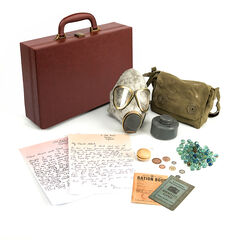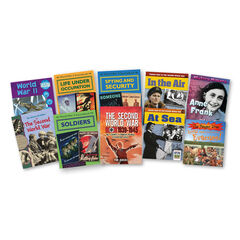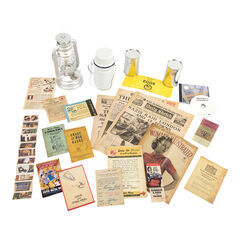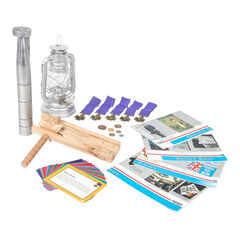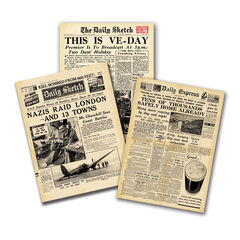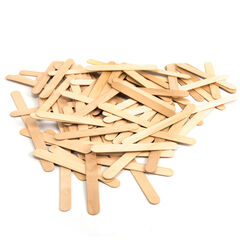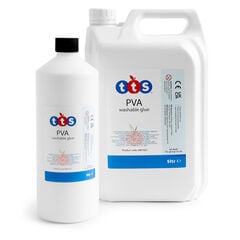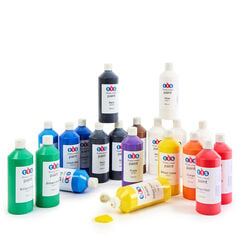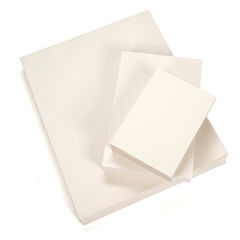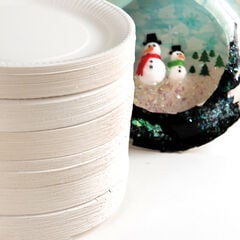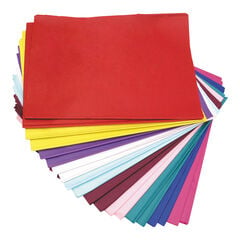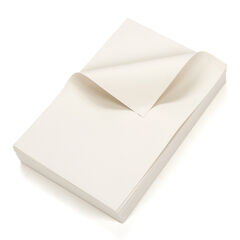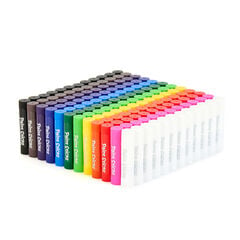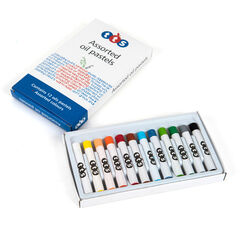Celebrate Remembrance Day and discover what it is and how people commemorate the day. Read this blog to explore Remembrance Day activity ideas and art projects to enjoy with your children.
What is Remembrance Day?
Remembrance Day, also known as Armistice Day, commemorates the end of World War One. In 1918 an agreement to stop the fighting was reached on the 11th hour, of the 11th day, of the 11th month.

The day is held to remember all those who have died in wars. It is marked by a two-minute silence at 11 am. Many people stop what they are doing and stay still and silent for two minutes to honour those who have given their lives in battle. The end of the silence is broken by the incredibly haunting bugle notes of The Last Post.
When is Remembrance Day?
The 11th hour, of the 11th day, of the 11th month.
The United Kingdom and other Commonwealth nations hold ceremonies on the nearest Sunday to November 11th. This day is called Remembrance Sunday. This year Remembrance Day will be held on Sunday 9th November 2025.
How do people celebrate Remembrance Day?
The day commemorates both World War One and Two and all other conflicts since. Poppies are worn as a symbol of remembrance, inspired by the poppies that grew on many battlefields as recorded in the famous poem by John McRae ‘In Flanders Fields’
‘In Flanders fields the poppies blow
Between the crosses, row on row….’
Poppies
Poppies, with their simple but strikingly recognisable appearance, are symbolic of this time of remembrance. They were the only flowers which managed to grow on the battlefields after all the mud and destruction, devastation and despair. Since ancient times, poppies have been seen as a symbol of sleep, peace and death.

Volunteers sell traditional poppies and other related merchandise on the run-up to Remembrance Day, and the Royal British Legion website offers information, services and products throughout the year.
An activity everyone can enjoy is creating own handmade poppies from either felt or with crepe paper and card. Children can write names, thoughts of remembrance or symbolic words on the leaves.
Other Remembrance Activity Ideas
- Enjoy following Wartime recipes
- Read and share War poems
- Grow Poppies and create a wildflower garden area
- Visit war memorials
- Write letters/postcards from a soldier’s perspective
- Listen and share war time stories such as War Horse by Michael Morpurgo
- Create thank you cards
- Explore wartime artefacts
- Design a medal
- Allow time for reflection and observe a respectful moment of silence
Resources you may like to look at:
- TTS Evacuees Suitcase of Belongings
- Life in WW2 Books
- Air Raid Shelter Artefact Collection
- TTS WW2 Artefact Collection KS2
- WW2 Wartime Newspapers
Remembrance Day Art and Craft Inspiration
Here are our Remembrance Day Arts and Crafts ideas with step-by-step instructions:
Remembrance Day How Tos
Explore the important significance of Remembrance Day with children whilst they have fun creating these easy craft projects. From a quick make ideal for lunchtime or afterschool clubs to a more involved project, there’s something suitable for time available, ages and abilities.
Remembrance Day Poppy Wreath
What you will need:
Thick white Paper/White Sugar Paper
How to Make:
Step 1
Cut the centre out of a paper plate to make the basic wreath shape. Paint with ready mixed paint creating the ‘base’ colour for the Remembrance wreath.
Step 2
To make the poppies, add red and yellow ready mixed paint to a shallow inking tray. Use something with a round base to print flower/petal shapes (eg. recycled pots, paint pots etc – I’ve used the base of a small foil tin). Press into the paint and ‘twist’ to slightly mix the colours for a more interesting print. Lift and print onto the paper. Repeat and cover the sheet (you need approx. 7 circles per wreath for this craft project but make more and you can use for other Remembrance activities). Leave to dry.
Step 3
Cut lengths of light and dark green tissue paper. ‘Snip’ into one side of the tissue strips to create a textured grass effect. Wrap the pieces of tissue lightly around the wreath securing each piece on the back with clear tape.
Step 4
Next take a length of yarn and lightly wrap around the wreath (to represent the ‘stems’ of the poppies) adding more pattern and texture. Stick with clear adhesive tape on the back of the paper plate.
Step 5
Cut out the printed circles. One by one take a circle and gently shape each one between your fingers into a slightly 3D flower shape.
Step 6
Use ‘snipped’ black tissue paper glued into the centre to make the Poppies distinctive stamens, finish with a coloured plastic craft button/bead to complete the flower.
Step 7
Plan where the poppies are going to sit around the wreath spacing them out evenly then stick on with PVA glue. Leave to dry.
Field of Poppies Remembrance Day Mixed Media Picture

An exciting art children’s project which includes elements of 2D and 3D and encourages children to explore a range of materials to make marks, add design and decoration. This can be done as an individual piece or scale it up for a group project and create a dynamic classroom display celebrating this very special day.
What you will need:
Ready Mix Assorted Paint Sticks
How to make:
Step 1
Paint the whole A3 sheet of watercolour paper with a ‘wash’ of ready mixed paints (slightly water down the paint for a lighter, translucent effect) using greens/yellows/blues to create a base colour for the picture.
Step 2
Print and make some 3D poppy flower shapes using ready mixed paint onto cartridge paper following the same instructions in our blog ‘Remembrance Poppy Wreath’.
Step 3
Treat the picture as 2 halves – the top will be 2D, the bottom of the picture will have some 3D elements. Starting from the top, use red/orange/yellow paint sticks to draw poppy flowers onto half of the picture.
Step 4
Explore mark making and add more depth to the picture using the edge of lolly sticks dipped in ready mixed paint to print poppy stems on to the bottom of the picture, working up to the middle.
Step 5
Use oil pastels and chalk loosely draw leaves and buds into the background encouraging children to explore colour, pattern and mark making using different media.
Step 6
Choose where the small 3D poppies you’ve made will be positioned on the picture and stick down using PVA.
Step 7
Make the large 3D poppies by gluing together 4 single printed poppy circles. Shape the petals between your fingers, add black tissue paper as the stamens and a button for the centre.
Stick the large 3D poppies to the bottom of the picture to finish off the scene.
Step 8
Stick the large 3D poppies to the bottom of the picture to finish off the scene.
Remembrance Day Single Poppy Children’s Craft – Quick Make
A simple quick-make craft enabling young children to create their own beautiful 3D Remembrance poppy to take home (or to be used in an exciting whole school display installation!)
What you will need:
How to make:
Step 1
Following the same instructions for our two other Remembrance Poppy ‘How to’s’ make the poppies using ready mixed paint printed onto heavy weight white cartridge paper.
Step 2
Paint the wooden craft lolly sticks with green ready mixed paint (or these could be coloured with felt tips). Leave to dry.
Step 3
Cut out the poppies from the printed sheet and shape between your fingers ‘pushing’ up the petals to make the flower look 3D.
Step 4
Using PVA glue some black tissue paper in the centre of the flower to make the striking stamens and a bead/button for the centre. Stick onto the coloured lolly stick.
Step 5
To complete the single poppy, add some extra colour and interest by cutting leaf shapes from coloured card and glue one or two in place on the lolly stick.
We hope you enjoy these activities.
Blog written by Rachel Betteridge with art activity ideas provided by Nicky Mountcastle.
Rachel is a Content Editor for TTS. She is a qualified Primary School Teacher with 26 valuable years of experience, teaching from Early Years to year 6.
Nicky is a Content Editor for TTS for Art & Commodities. With a love for art & craft from a young age Nicky trained in Art & Design and has enjoyed a variety of creative jobs throughout her career. Making, discovering and sharing ideas is one of her favourite things to do!




























